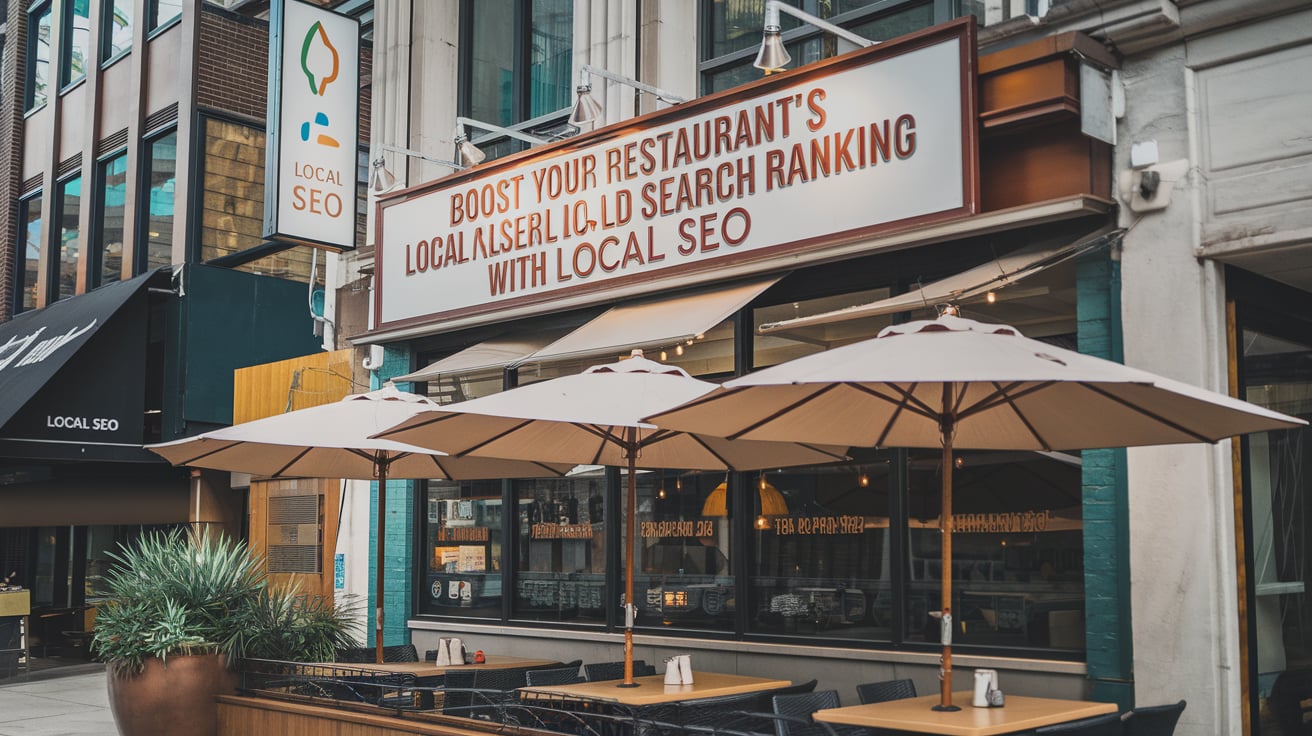
- Local searches are highly valuable for restaurants, as 46% of all Google searches are seeking local information. This highlights the importance of optimizing for local search to connect with potential customers in your area.
- Local SEO can significantly impact conversions, with 80% of local searches resulting in users converting into customers for a business. This demonstrates the effectiveness of local SEO in driving actual business results for restaurants.
- Mobile optimization is crucial, as over 60% of restaurant searches originate from mobile devices. Ensuring your restaurant’s website and Google Maps listing are mobile-friendly is essential for capturing this large segment of potential customers.
- Google My Business (now called Google Business Profile) is a critical component of local SEO. It’s one of the biggest ranking factors for local search results, along with customer reviews.
- Online reviews play a significant role in local SEO and customer decision-making. 94% of US diners are influenced by online reviews. Encouraging customers to leave reviews and responding to them promptly can boost your local search visibility.
- 79% of marketers consider local SEO a highly effective strategy. This indicates that investing in local SEO can give restaurants a competitive advantage, especially if competitors are not fully utilizing these tactics.
- Creating localized content, such as blog posts about local events or collaborations with nearby businesses, can improve a restaurant’s ranking for local search queries.
- Accurate and consistent business information across various online platforms is crucial. Ensuring your restaurant is listed correctly in popular directories like Yelp, Yellow Pages, and TripAdvisor can improve visibility in local search results.
So, you’ve got a restaurant. You’ve got the food, the vibe, the whole experience ready to roll.
But here’s the problem: not enough people in your area even know you exist.
Local SEO is your fix.
And I’m not talking fluff here I’m talking proven steps to drive people right to your door using local SEO.
Ready?
Why Local SEO?
Here’s what Local SEO really is: it’s the key to making sure your restaurant gets seen by the folks nearby, ready to eat, and searching right now.
Google isn’t a guessing game. Local SEO ranks you on location, relevance, and authority.
Nail these, and you’ve got yourself a steady stream of local traffic.
Step 1: Claim and Optimise Your Google Business Profile
First things first, claim that Google Business Profile if you haven’t already. Think of it as your online front sign no profile, no visibility. Simple as that.
- Claim Your Profile Just head to Google Business and set up if it’s not already claimed.
- Fill in Every Detail Menu, hours, photos, location, the works. Don’t leave blanks.
- Use Keywords Keywords matter here too. Use phrases like “family friendly restaurant in [City]” or “best brunch [City]” to capture attention in search results.
👉 For an in depth look at setting up and optimising Google Business, check out Google Business Profile Optimization.
Step 2: Local Citations Consistency Counts
Now, let’s talk about local citations listings of your restaurant across the web.
Think of it as building a web of connections. If someone Googles your place on Yelp, TripAdvisor, or even smaller sites, you’ll show up, but only if these citations are in place.
- NAP Consistency Name, Address, Phone Number all identical on every platform. Even a small typo here hurts rankings.
- Directories that Matter Hit up Google, Yelp, TripAdvisor, and then the more niche directories. But don’t spam them go quality over quantity.
- Stay Updated If your hours or contact change, update every directory right away.
For more on keeping your citations straight, see Local Citation Building and Management.
Step 3: Reviews Your Golden Ticket
Reviews are the heavy lifters in Local SEO.
You could have the fanciest menu, but if people can’t find reviews that back it up, your ranking will tank.
And no, you don’t need to bribe or beg just make reviews part of the experience.
- Ask Every Customer Put a QR code on the receipt or table that links to Google or Yelp. Make it easy.
- Respond to Reviews Google loves engagement. A simple “thanks” or “see you next time” counts.
- Turn Negatives to Positives Got a bad review? Own up, respond, and invite them back. It shows transparency, which Google likes.
Curious how reviews affect ranking? Visit How Important Are Reviews for Local SEO.
Step 4: Website Optimization Don’t Skip This
Look, your website is home base. If it’s clunky, outdated, or just plain hard to use, people won’t stay.
And Google tracks how long they stay that’s how important it is.
Key Website Must Haves:
- Mobile Friendly Over 60% of searches are mobile. Your site has to load fast and look sharp on any device.
- Local Keywords Sprinkle “best restaurant in [City]” and other location based keywords throughout your site.
- Schema Markup Schema is like a language for search engines. Adding it helps Google know exactly what you’re about.
For a deeper dive, check out On Page SEO for Local Businesses.
Step 5: Leverage Local Content
It’s a content game. Without it, Google has no reason to spotlight you.
But we’re not talking generic blog posts keep it local.
Local Content Ideas:
- Events Promote local events on your blog or even dedicate a page to them.
- Local Recipes Share recipes inspired by the area to give a community vibe.
- Food Trends Stay relevant by jumping on food trends, especially if they have local angles.
Want to know how to geotarget your content? Take a look at Geotargeting and Local Content.
Step 6: Social Media Connect Locally
Social media isn’t just for likes it drives SEO too.
And here’s the trick: it’s all about local engagement.
- Post Local Events Announce community events or food festivals you’re attending.
- User Generated Content Share photos or videos your customers post. It’s free advertising.
- Tag Locations When you post, tag your city or town. That way, locals get your posts in their feeds.
For the full rundown, head to Social Media and Local SEO.
Step 7: Track and Adjust with Local SEO Tools
Local SEO isn’t one and done. Use tools to keep tabs on what’s working, what’s not, and tweak as you go.
Tools to Keep Handy:
- Google Analytics Track who’s visiting your site, from where, and on what pages.
- Google My Business Insights See how many views your Google profile gets.
- Review Trackers Tools like Yext or BrightLocal help monitor reviews across platforms.
For a detailed look, visit Local SEO Analytics and Tracking.
Common Mistakes to Avoid in Restaurant Local SEO
Let’s keep this real Local SEO can be costly if you don’t avoid a few common slip ups.
- Ignoring Mobile If your website isn’t mobile friendly, fix that now.
- Forgetting NAP Consistency Any typo or old phone number drags you down.
- Not Engaging on Social Local engagement is free leverage; use it.
Want to avoid more pitfalls? See Common Local SEO Mistakes to Avoid.
Wrapping It Up
Boosting your restaurant’s Local SEO isn’t complicated, but it takes work and consistency.
Each of these steps is a building block for your online presence. Skip one, and the whole thing weakens.
Frank Masotti, a Local SEO expert, backs these strategies.
Got questions? Consider reaching out to Frank’s team at Local SEO Optimization.
And remember: the goal here isn’t just traffic; it’s hungry customers walking through your door.
